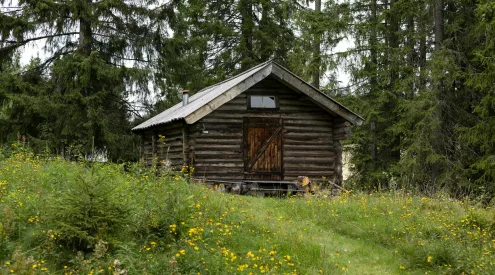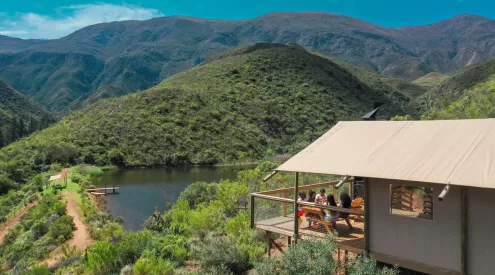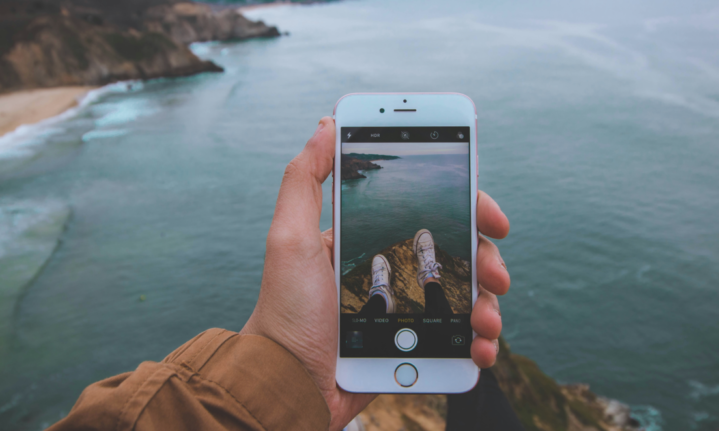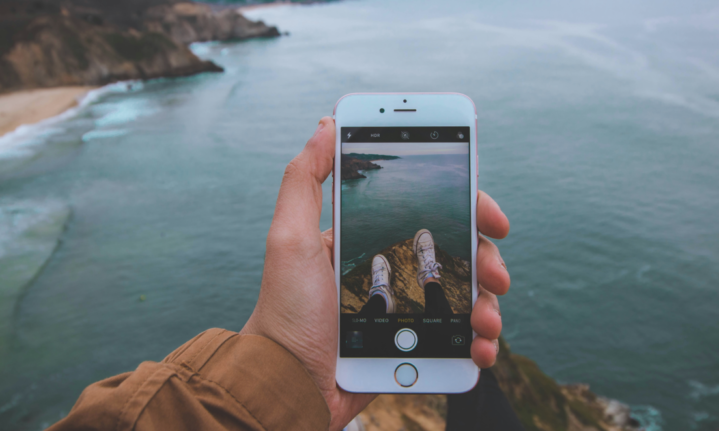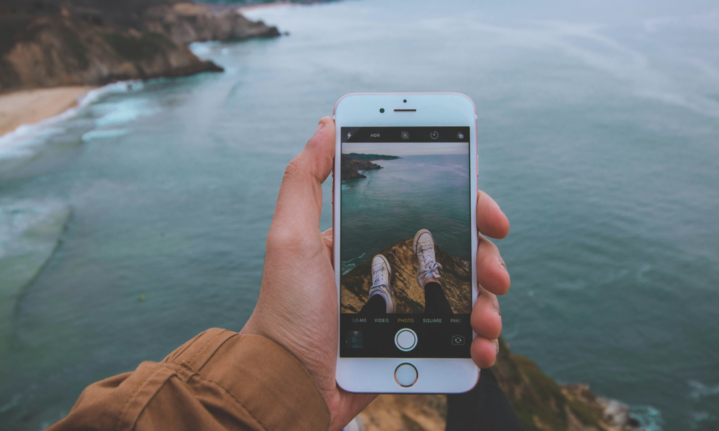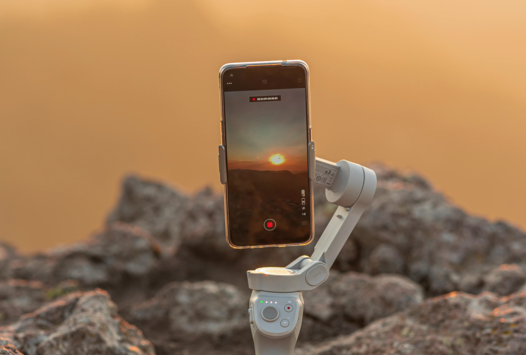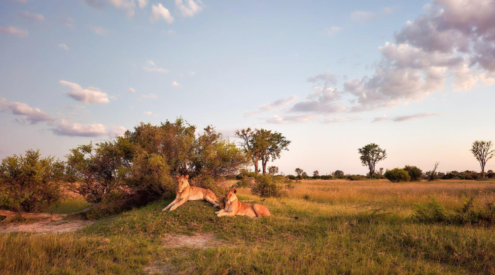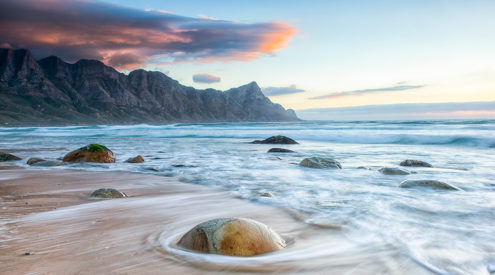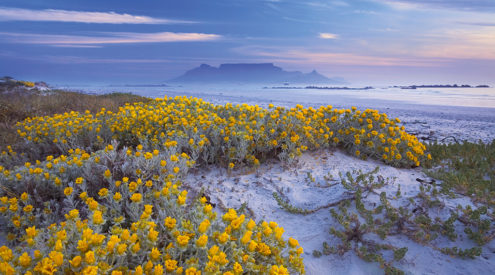Having photographs or videos to remember special memories from your travels is important. Still getting used to wielding the phone camera? We’re sharing a few travel content creation tips to make it easier to capture those special moments with skill.
1. Getting to know your phone camera’s settings
Understanding your phone’s camera settings is crucial for capturing high-quality photos and videos – many smartphones have settings that can aid in helping you get the best shot.
Experiment with different modes such as HDR (High Dynamic Range) which helps balance exposure in challenging lighting conditions, portrait mode for stunning depth-of-field effects, and panorama mode for capturing sweeping landscapes.
You can also adjust settings like exposure, which refers to the amount of light that reaches the camera sensor when you take a photo. White balance, which is the adjustment of colours in a photo to ensure that white objects appear white in the image, and focus, which determines the sharpness and clarity of the subject in your photo.
Many newer phone models include a setting that uses AI to help you get the ‘best shot.’ We don’t recommend using these settings with your camera, as AI often ‘fills in the blanks’, giving you an inaccurate shot.
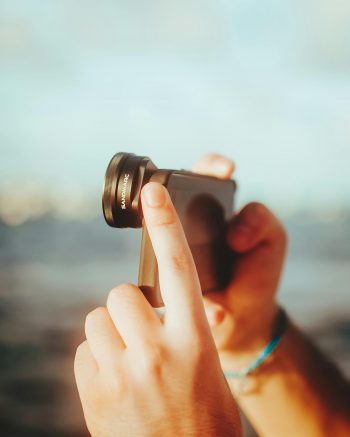
Pexels
2. Get yourself an external lens
External lenses can significantly expand the capabilities of your phone’s camera. Wide-angle lenses are perfect for capturing expansive landscapes, while macro lenses enable you to photograph intricate details up close. Telephoto lenses enhance zoom capabilities, allowing you to capture distant subjects with clarity. Clip-on lenses are portable and easy to attach to your phone, making them ideal for your travel photography.
3. Invest in a tripod or phone mount
Shaky footage is a no-no in the realms of content creation. A tripod or phone mount can help you achieve stability and support for your phone camera, while you’re capturing photos and videos.
Mounts and tripods can be used to shoot time-lapse footage (perfect b-roll for your TikTok videos), group selfies, or long-exposure photos. A stable base really helps to get sharper, more professional-looking results.
Look for lightweight, compact tripods that are easy to carry in your backpack or suitcase. Adjustable legs and flexible joints allow you to position your phone at various angles for creative framing.
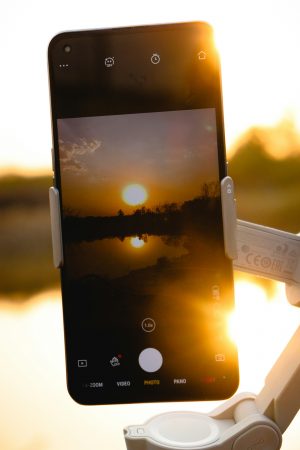
Unsplash
4. Get a gimbal
Gimbal stabilisers are handheld devices that use motors to counteract shake and movement, which give you smooth, steady video footage. Gimbals are great for filming walking tours, action sports, or vlogs. It works like a charm for removing the shake and jitter that comes from filming while walking.
Look for gimbals with features like pan, tilt, and roll control, as well as compatibility with your phone model.
5. Download the apps you will need
There are so many apps available for editing, organising, and sharing your travel content. Adobe Lightroom offers great photo editing tools, while CapCut is great for simple-to-understand video editing. Your phone’s camera should also have an ‘edit’ function, but it likely won’t be as fleshed out as Lightroom or Capcut.
6. Test out your techniques
If you’re looking to add more visual interest to your photos or videos, this is where technique comes in. Try using long-exposure photography to capture mesmerising light trails or starry skies (remember to keep your phone mounted for this).
Slow-motion video is perfect for capturing ‘cinematic’ sequences, like the crashing waves, diving into water, or capturing animals in slow-mo on a game drive.
You should also mess around with perspective, composition, and framing to create unique shots. Think about your angles! It takes practice to identify a great shot – look at content from your favourite content creators on social media to help guide you.

Unsplash
7. Use those built-in assistants
Most smartphones come equipped with built-in features that can enhance your content creation experience, when used correctly. The grid overlay helps you compose well-balanced shots using the rule of thirds or golden ratio. Burst mode allows you to capture fast-paced action with multiple rapid-fire shots.
8. Keep accessories on hand
Keeping all of your gadgets (ie. your mount, gimbal and external lenses) nearby is important for capturing that impromptu shot. In addition to your camera accessories, always remember to keep a charged battery bank on hand. You won’t be able to capture any content if your phone dies.
Think about investing in a waterproof phone case to protect your device from water damage and accidental spills. A shockproof travel case or multi-pocket organiser to keep your gear safe, and a microfiber cloth to wipe down your phone and lenses – you don’t want any smudges!
9. Whip out the camera more often
Like we said, practice makes perfect. Rather capture too much than be left with too little. Whipping your camera out in public might be something daunting that you’ll need to get used to, but the more you do it, the easier it becomes. Don’t be shy, others aren’t judging you for wanting to capture the moment.
Follow us on social media for more travel news, inspiration, and guides. You can also tag us to be featured.
TikTok | Instagram | Facebook | Twitter

